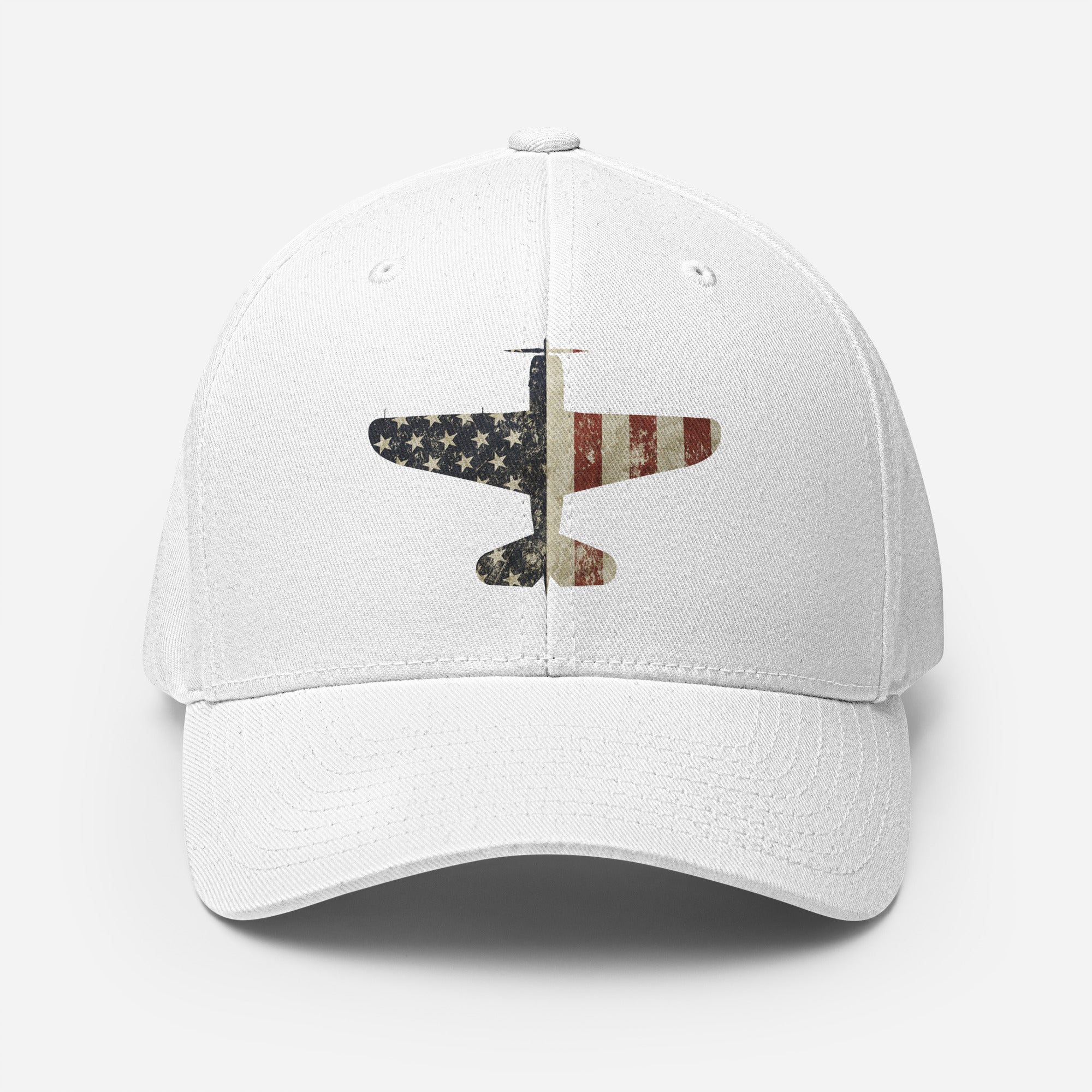
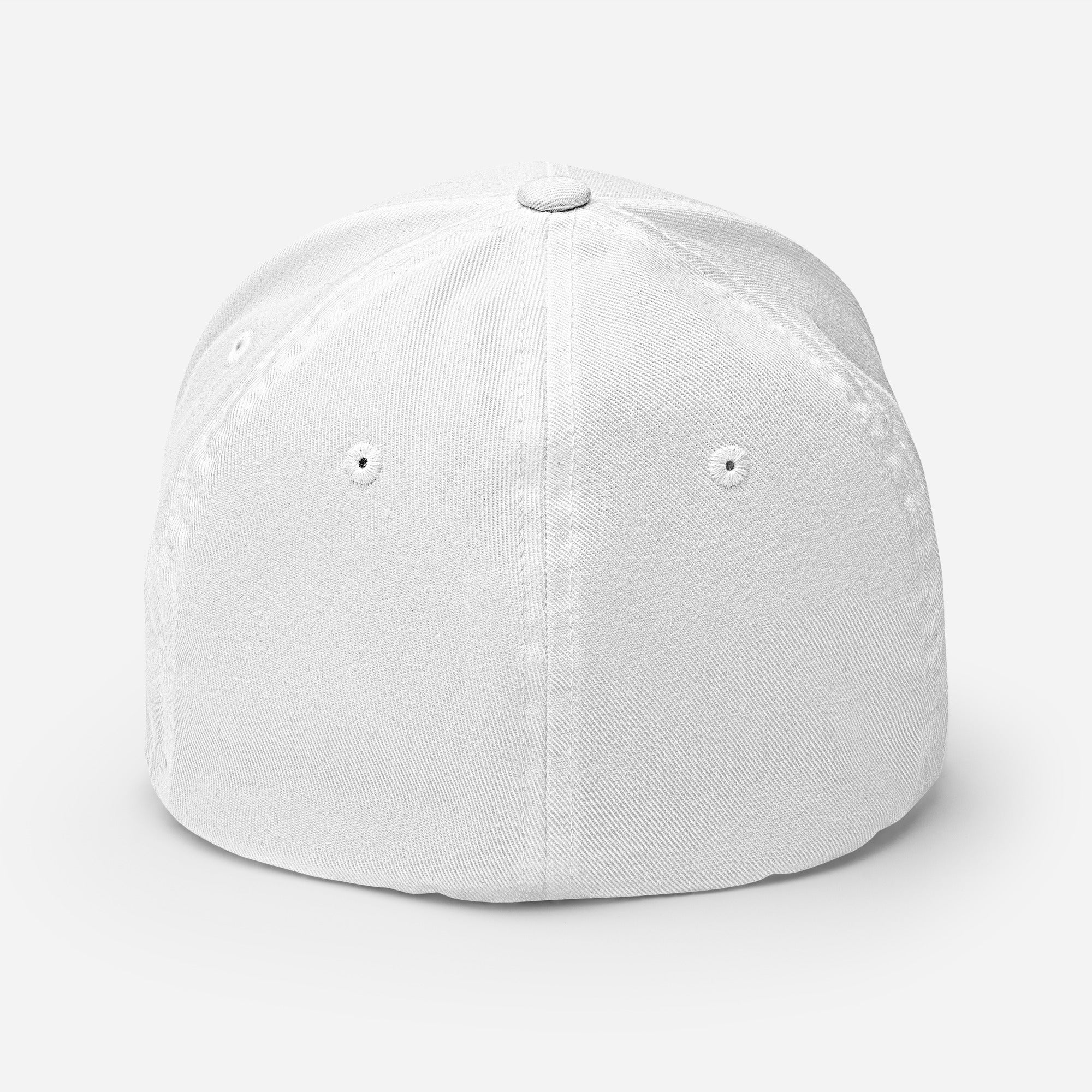
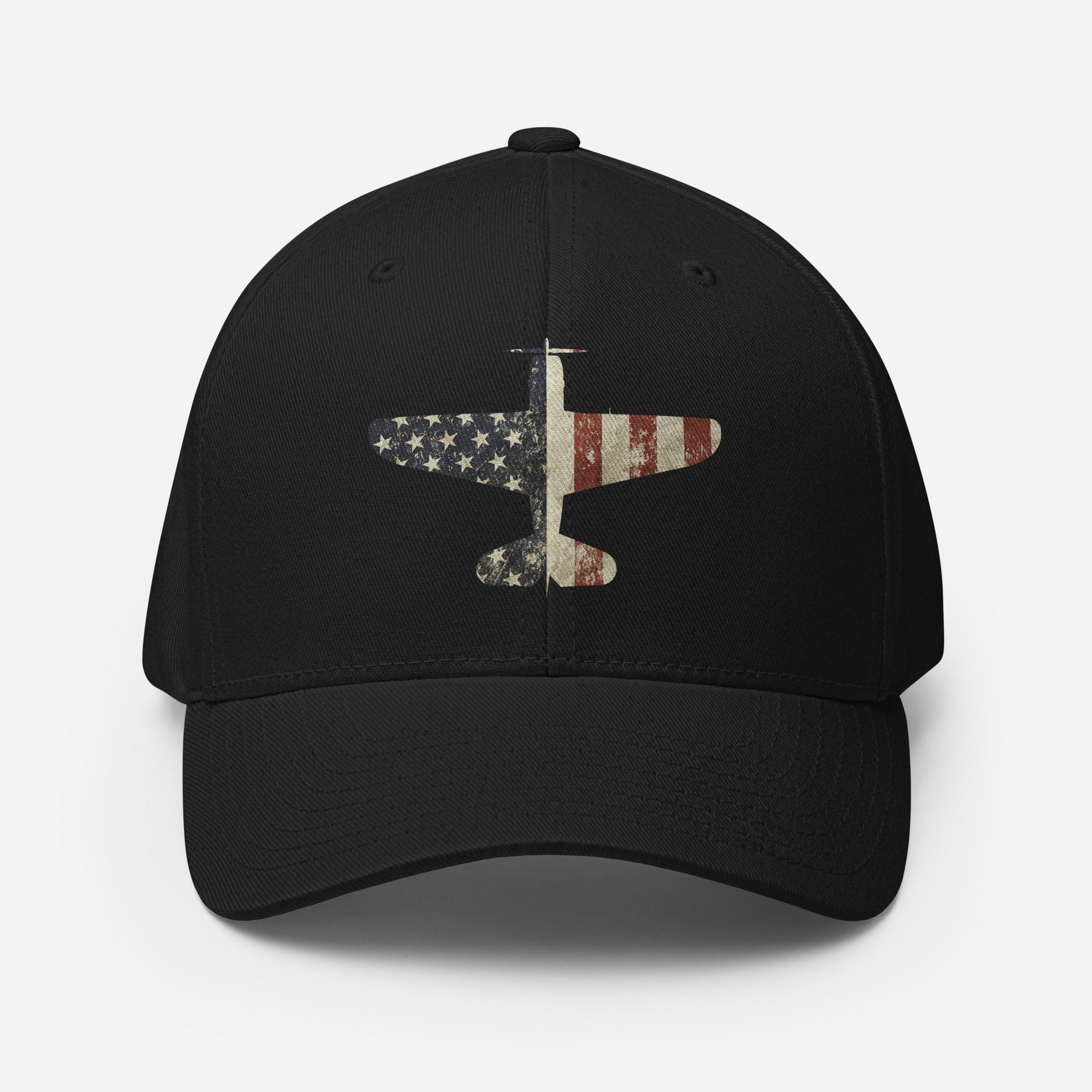
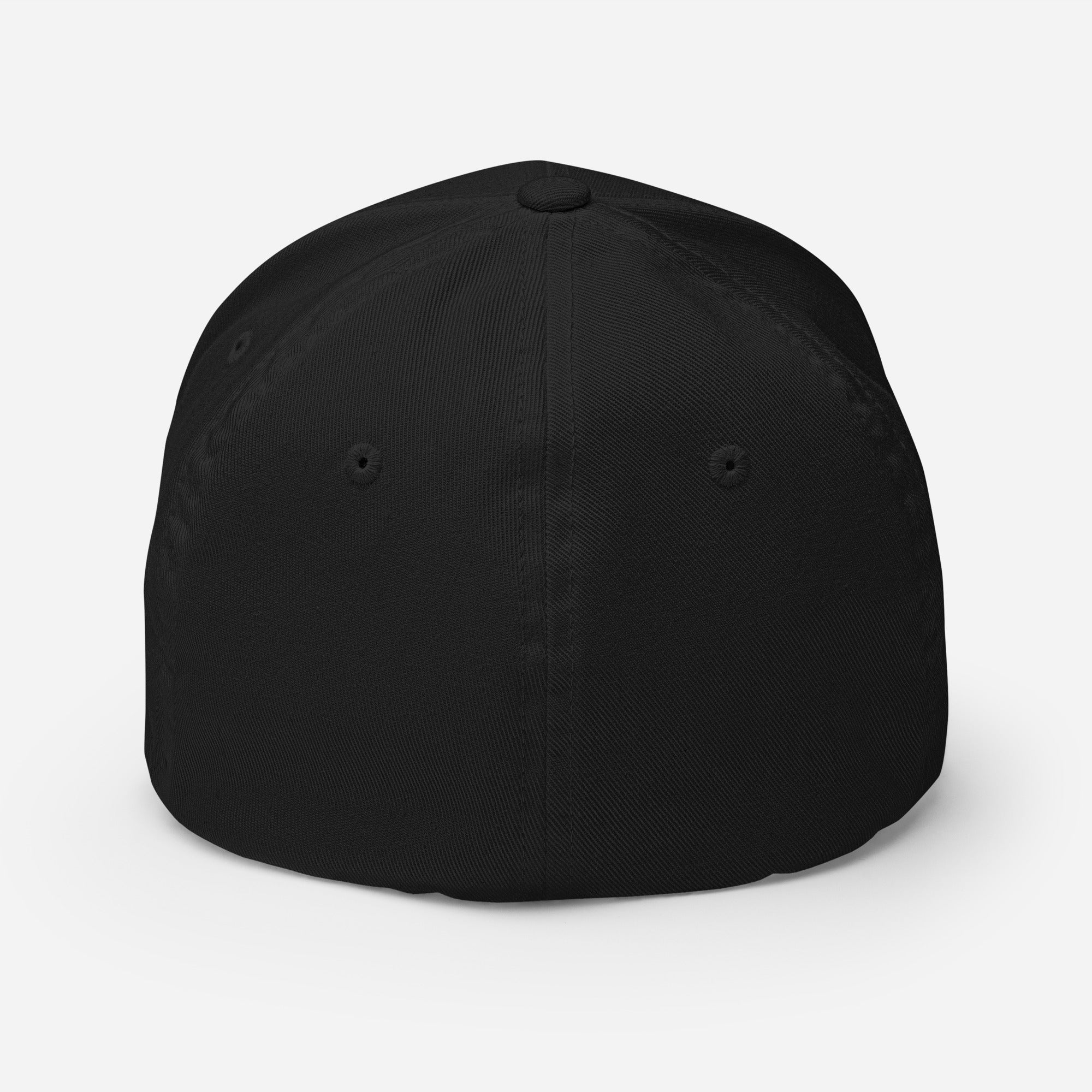
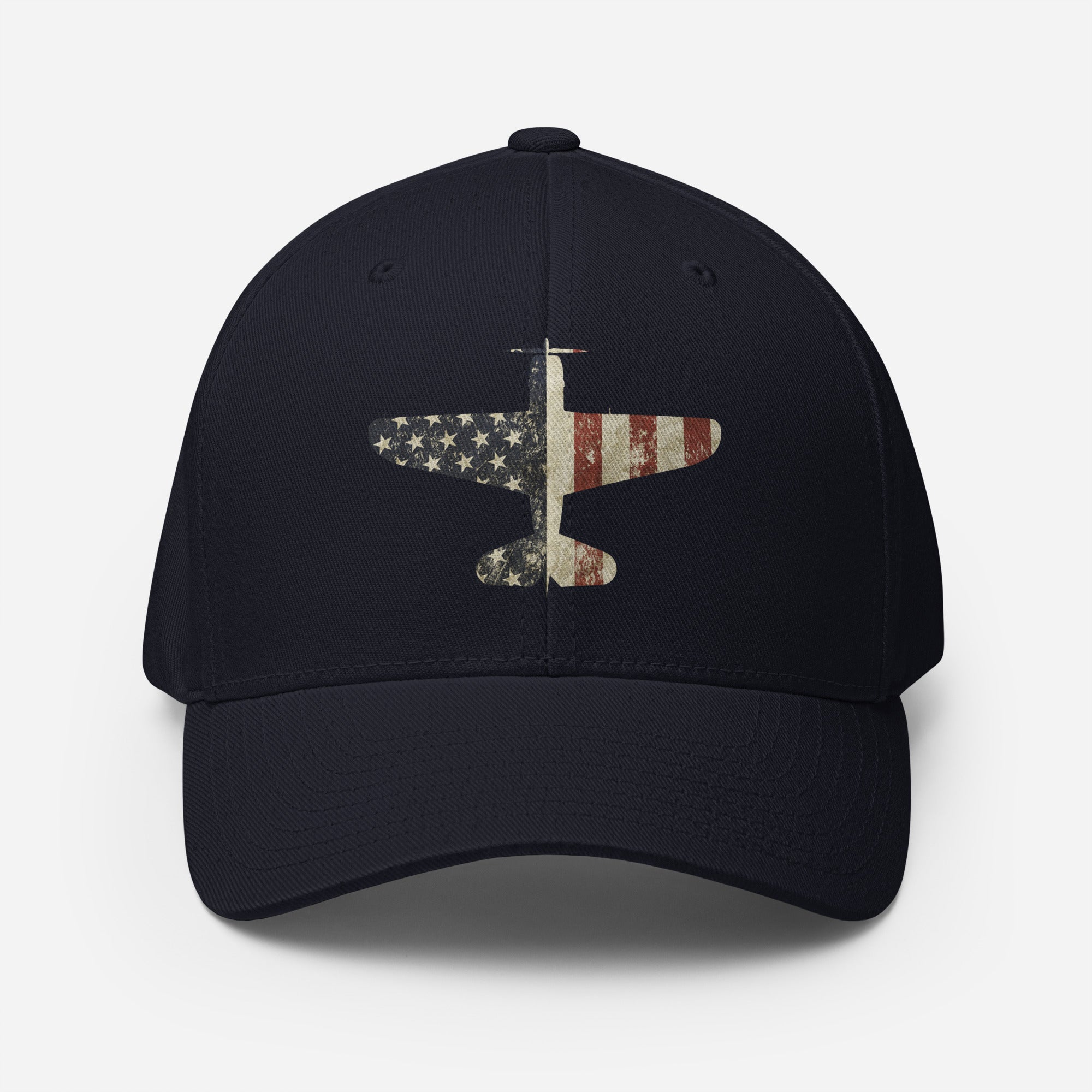
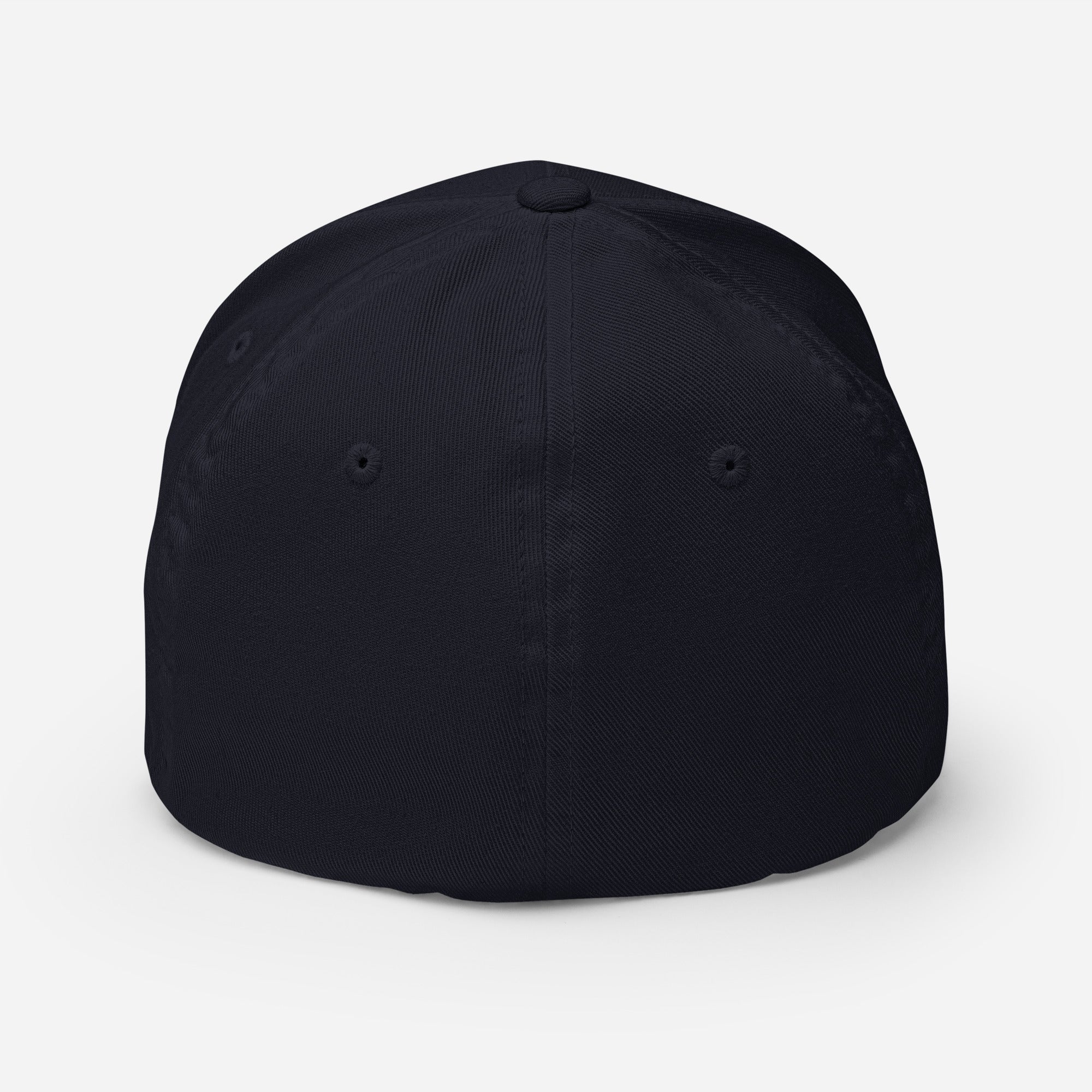
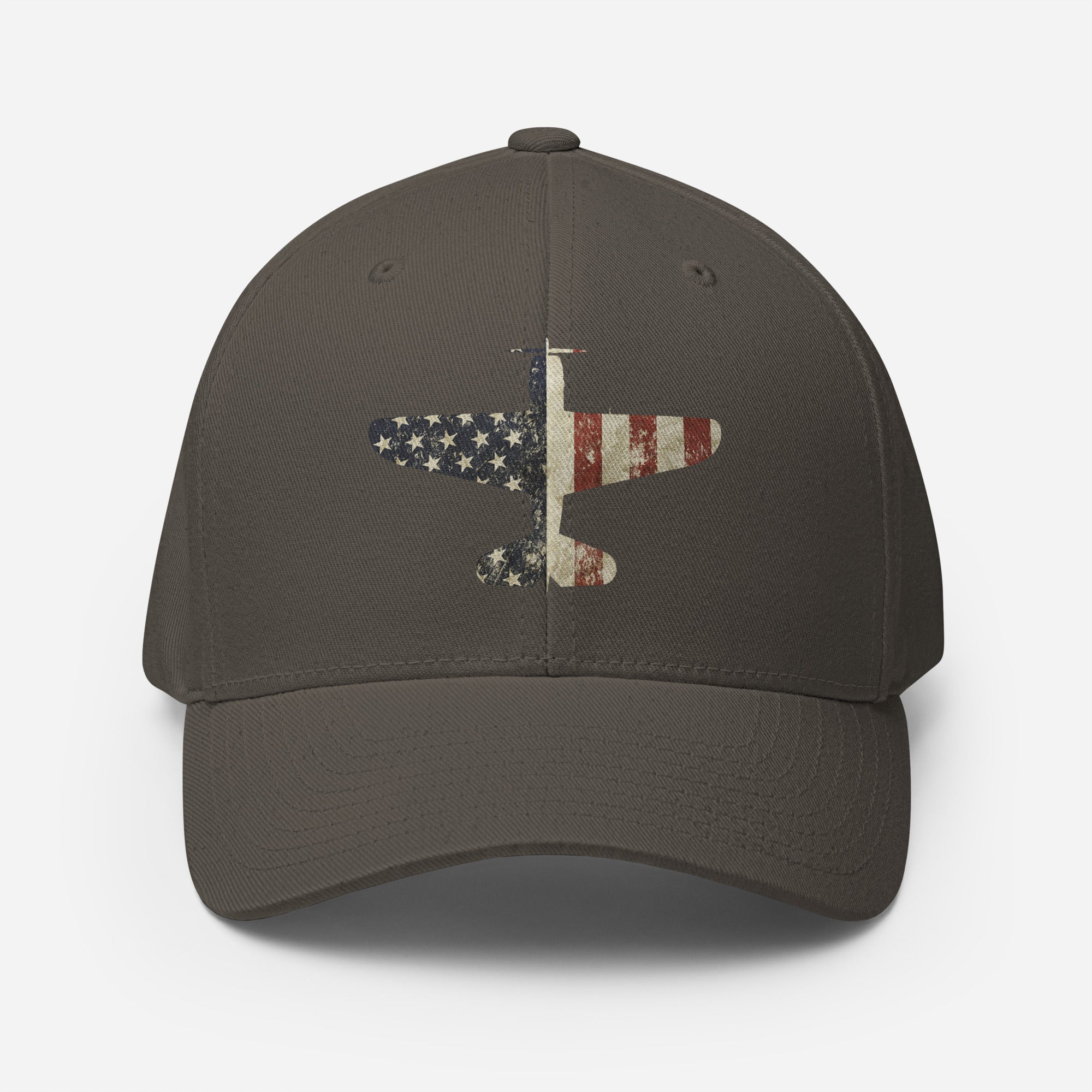
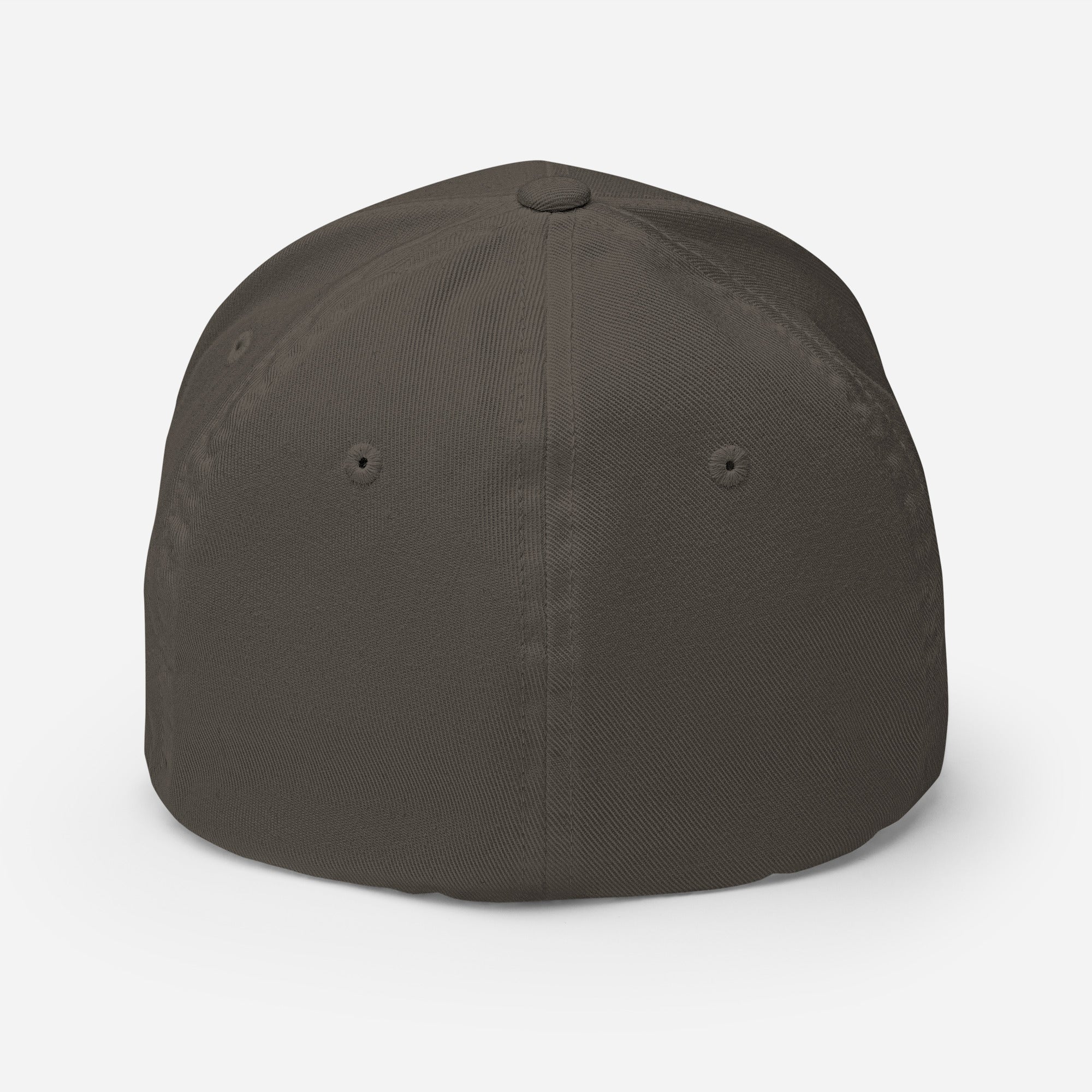
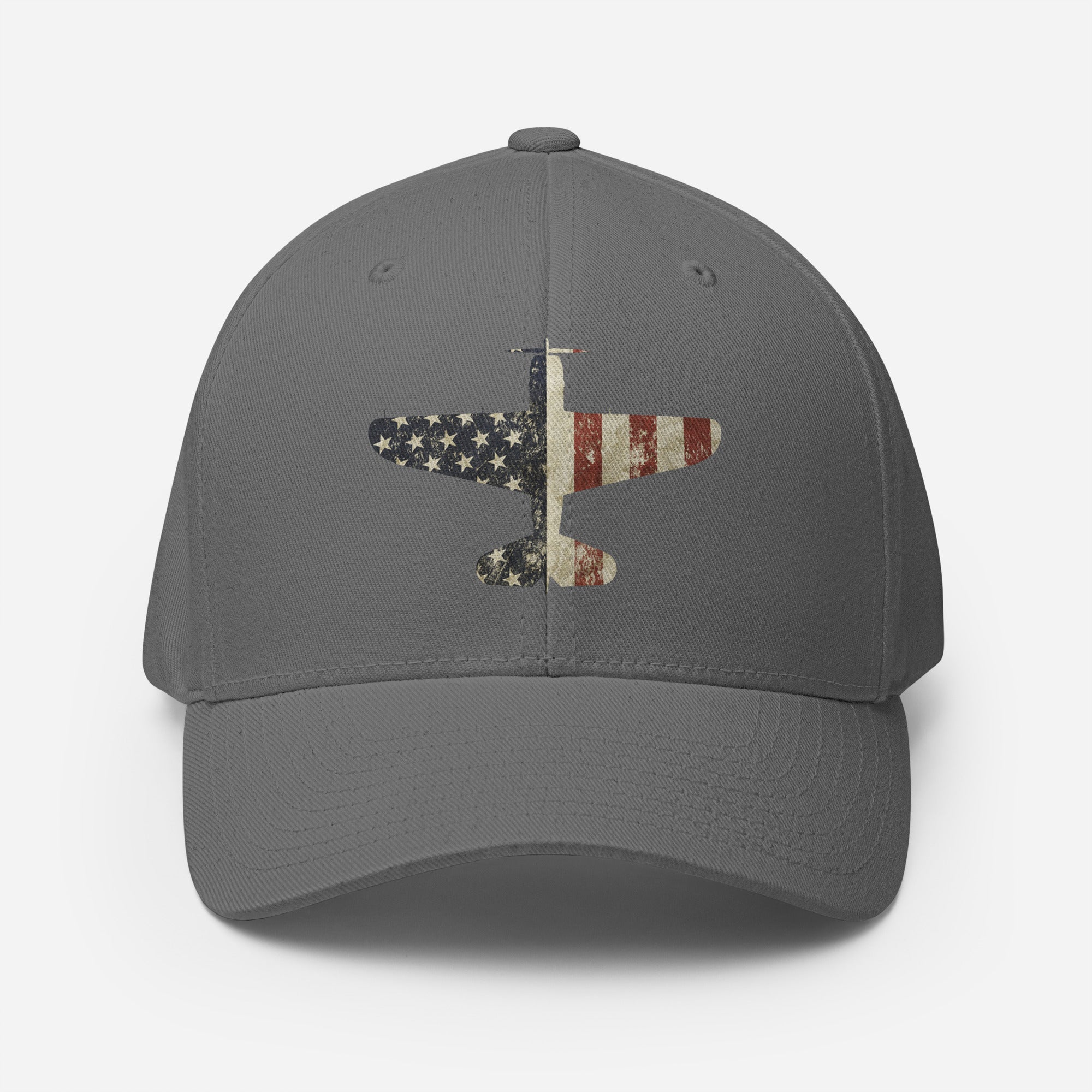
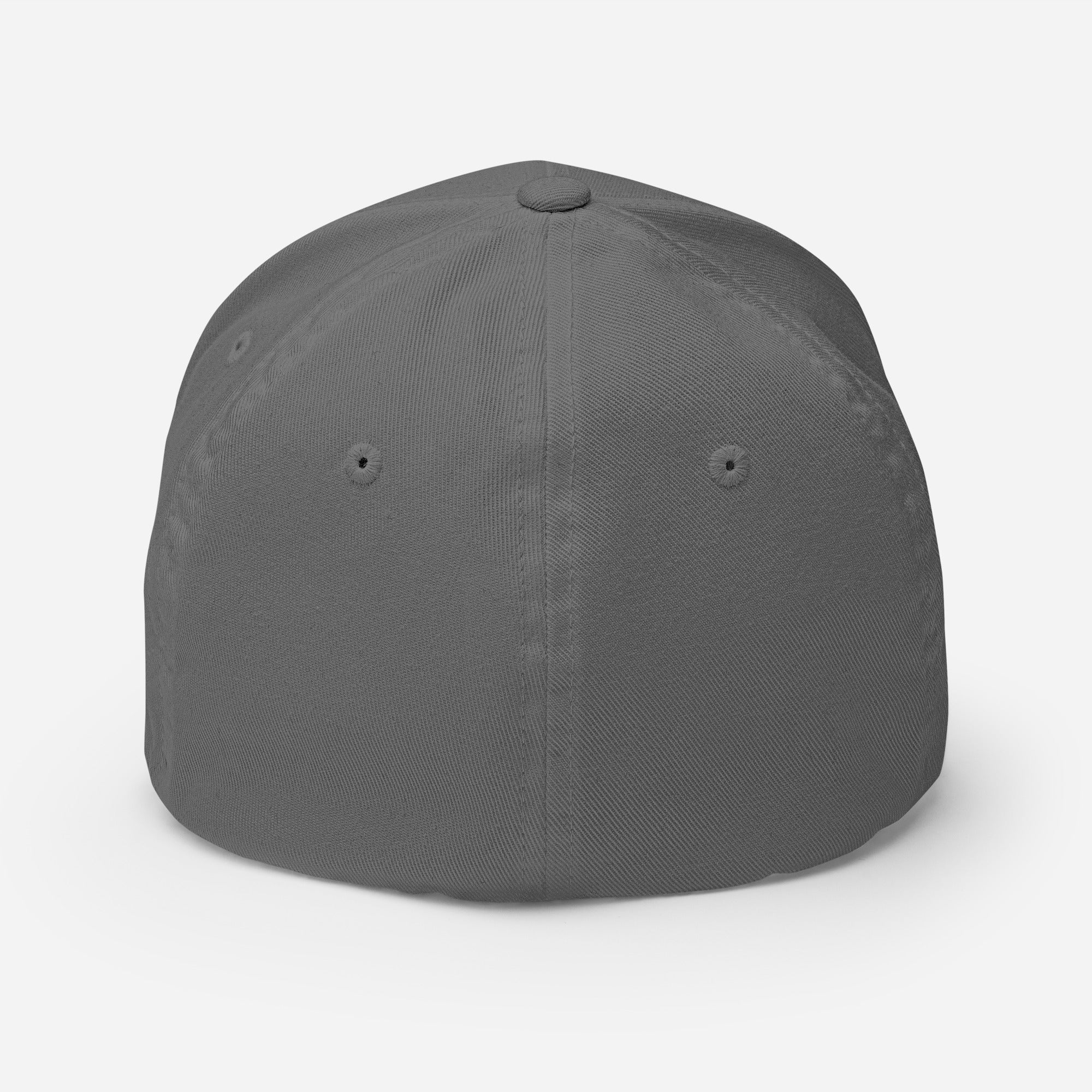
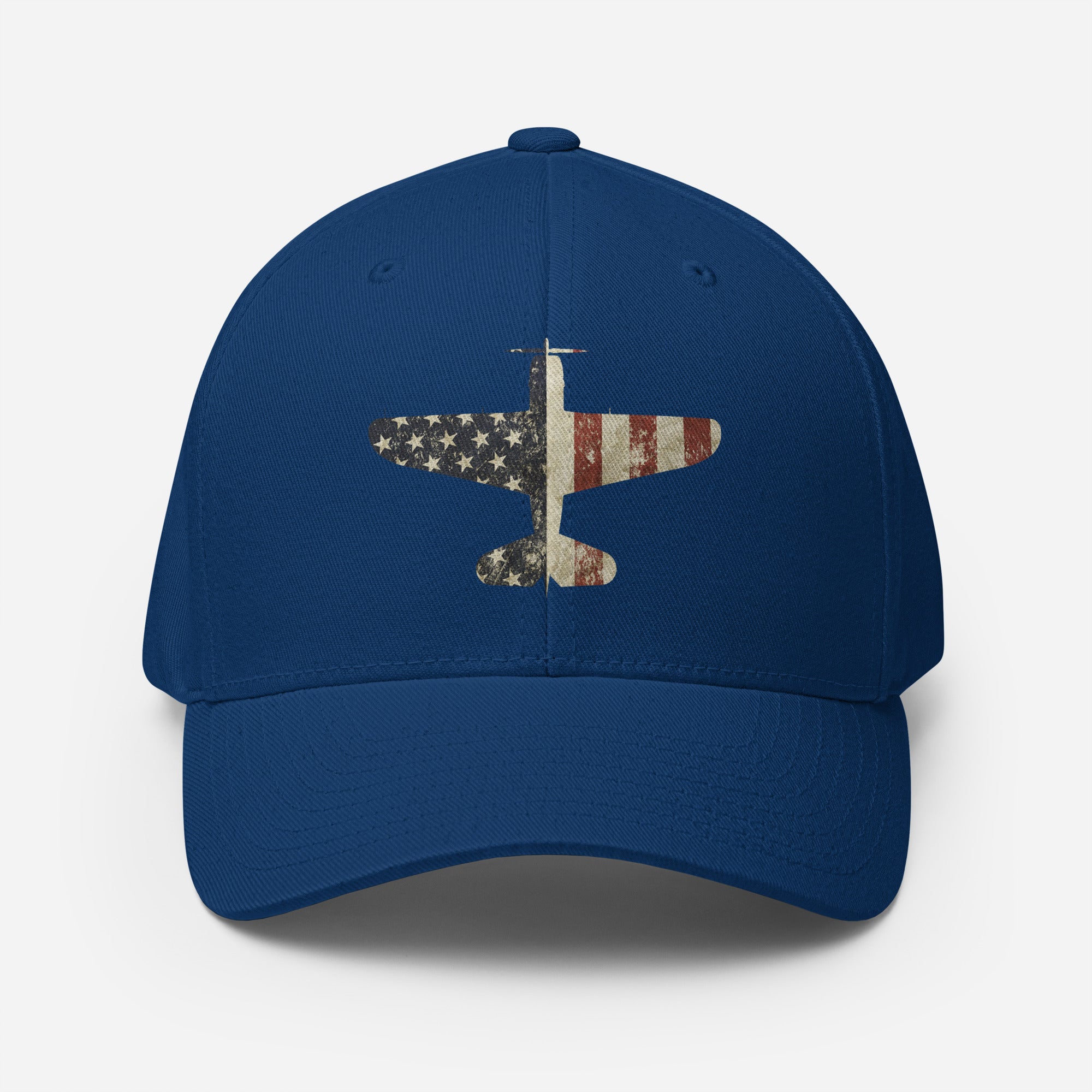
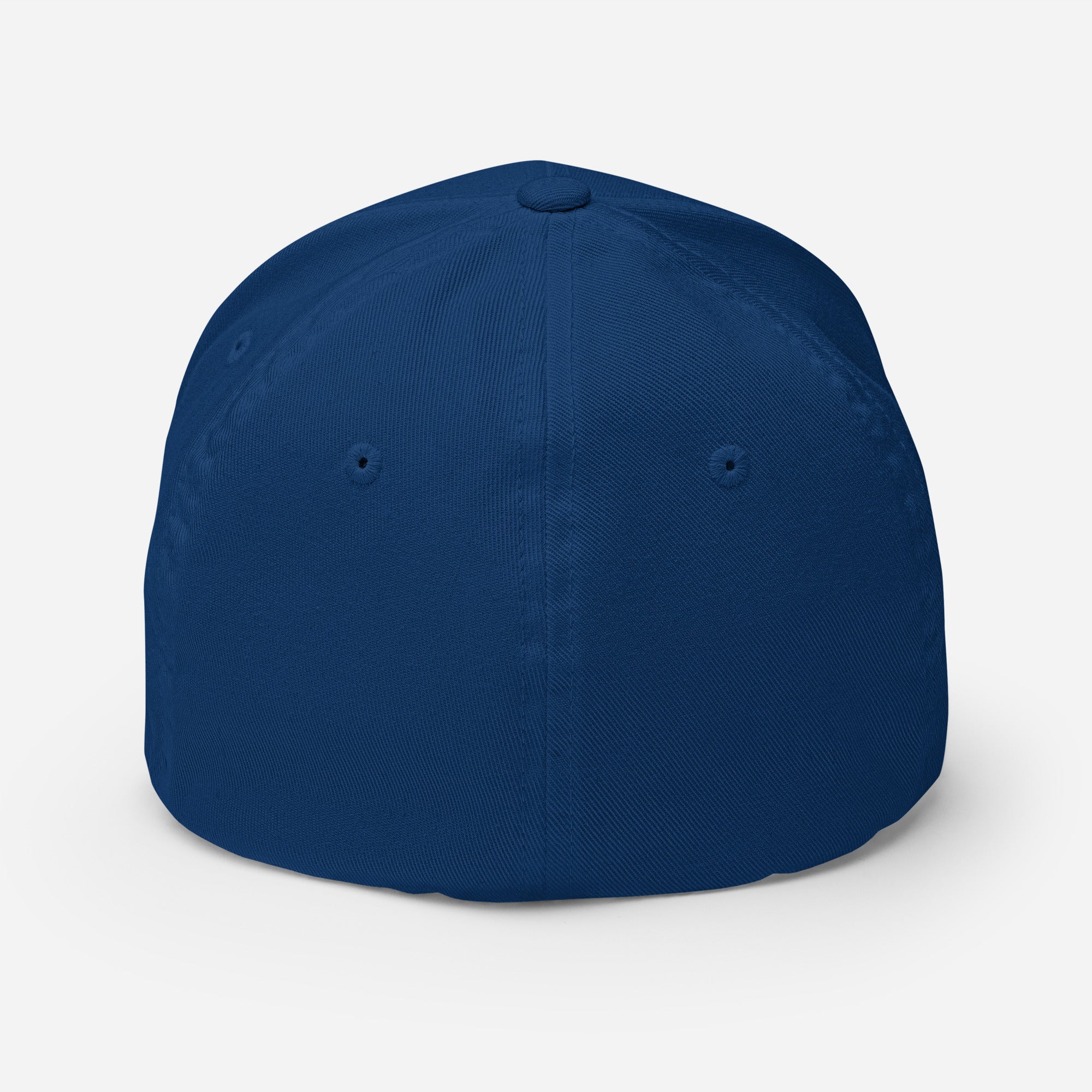
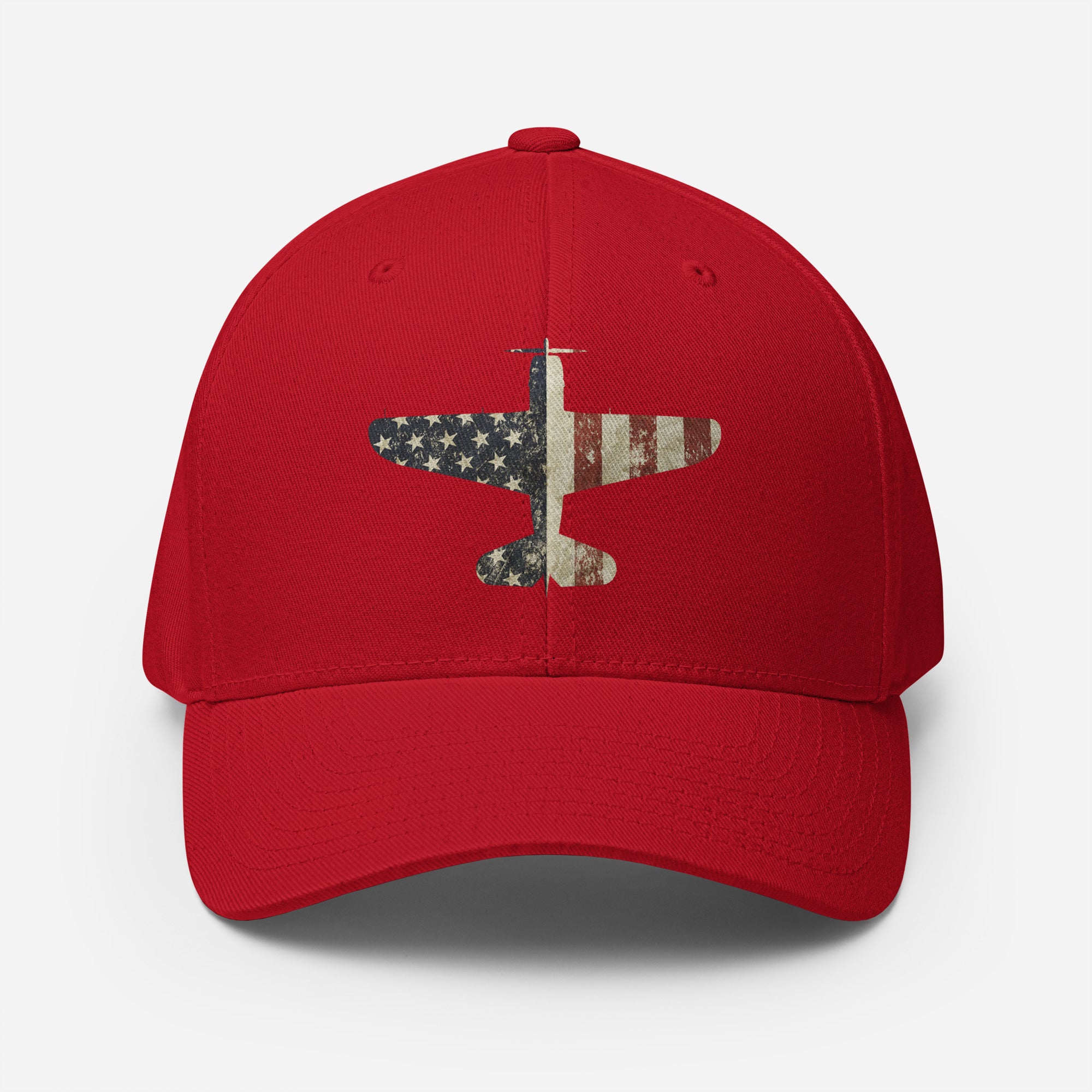
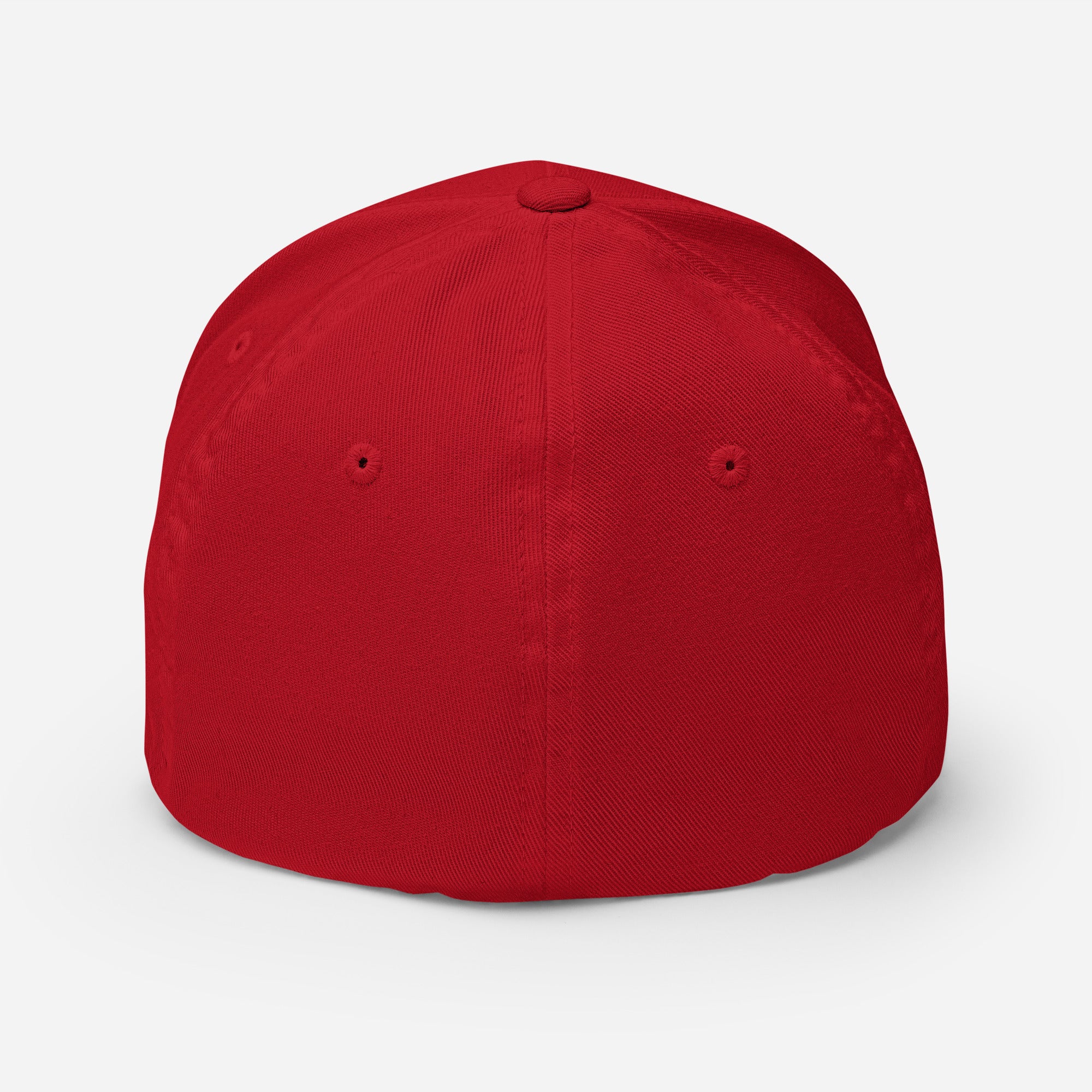
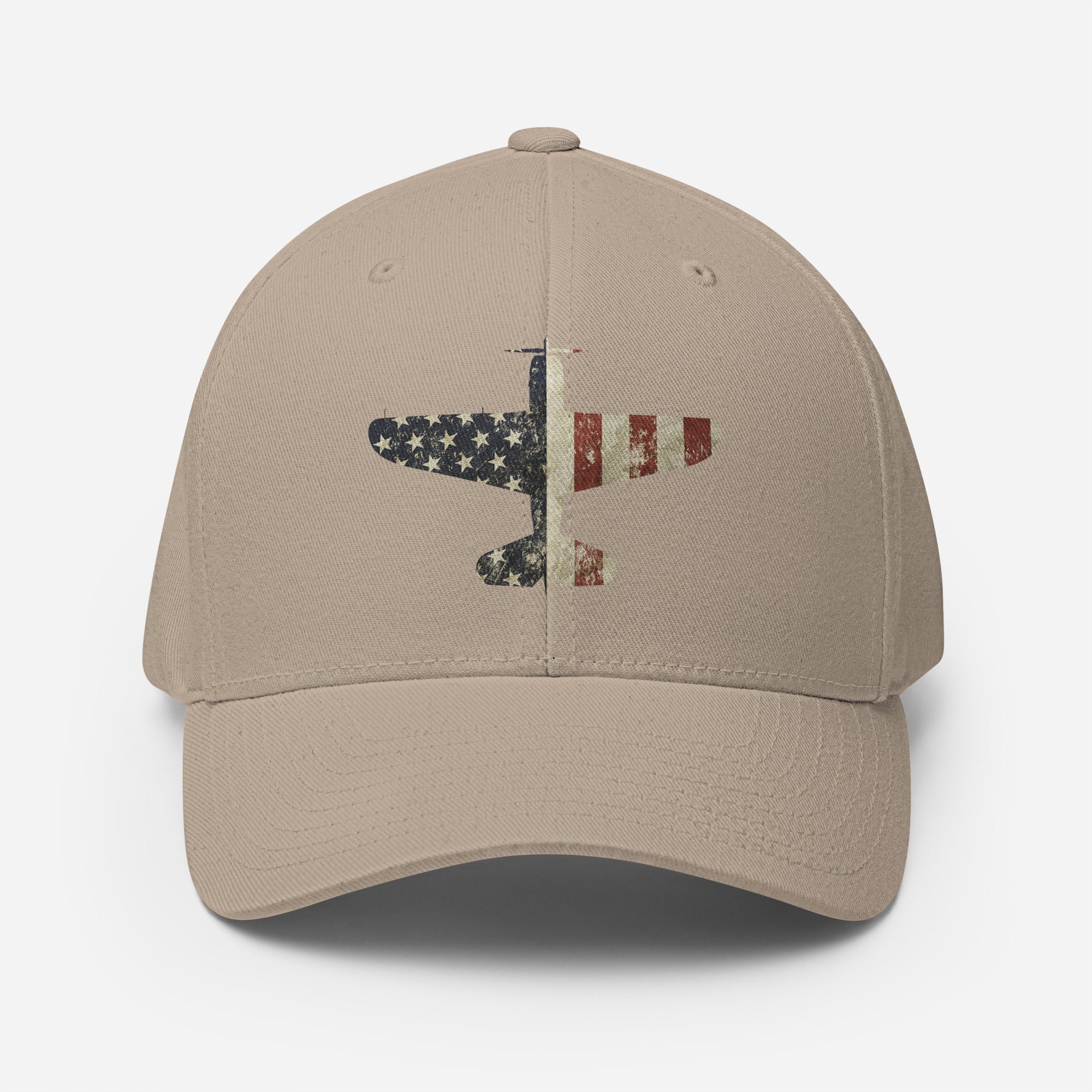
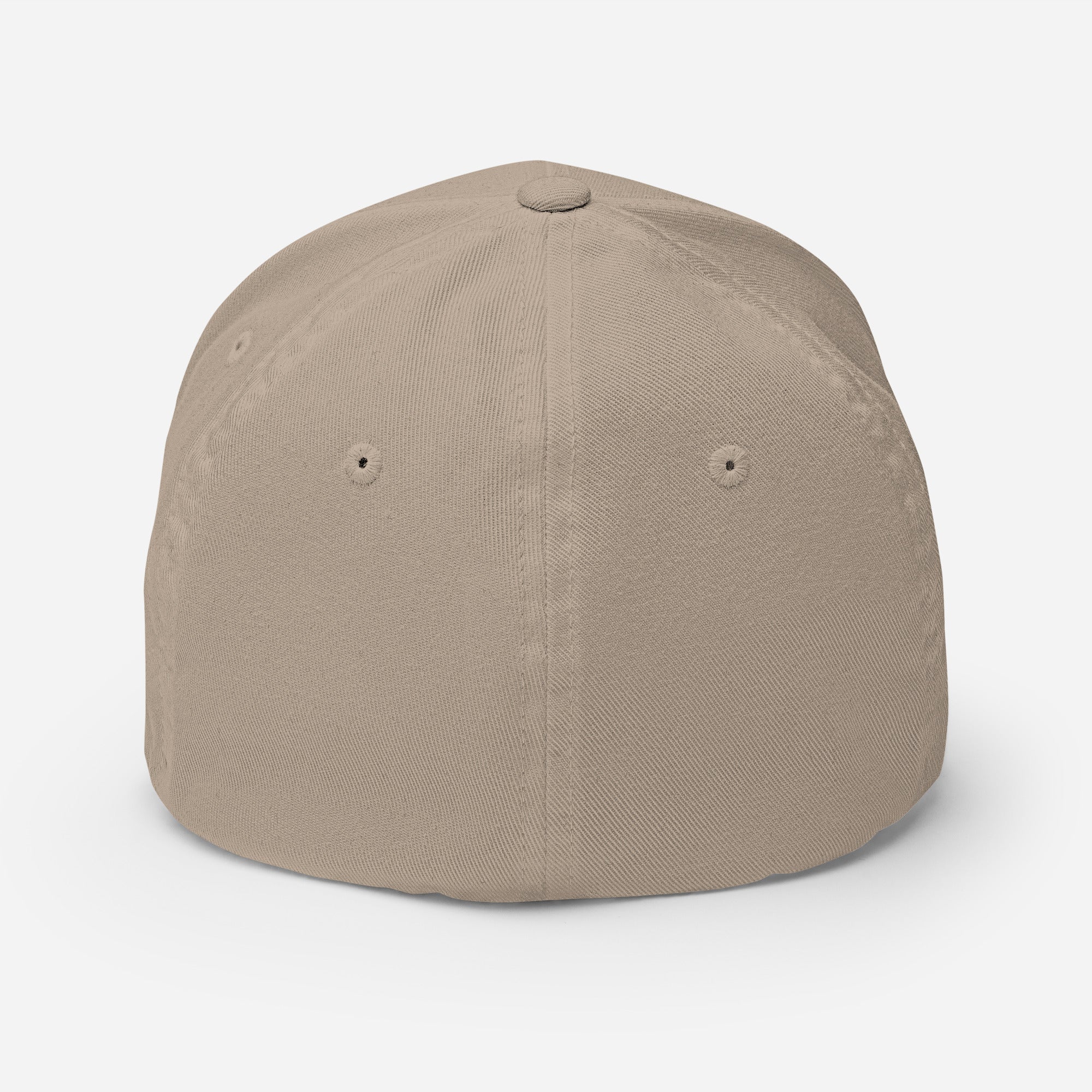
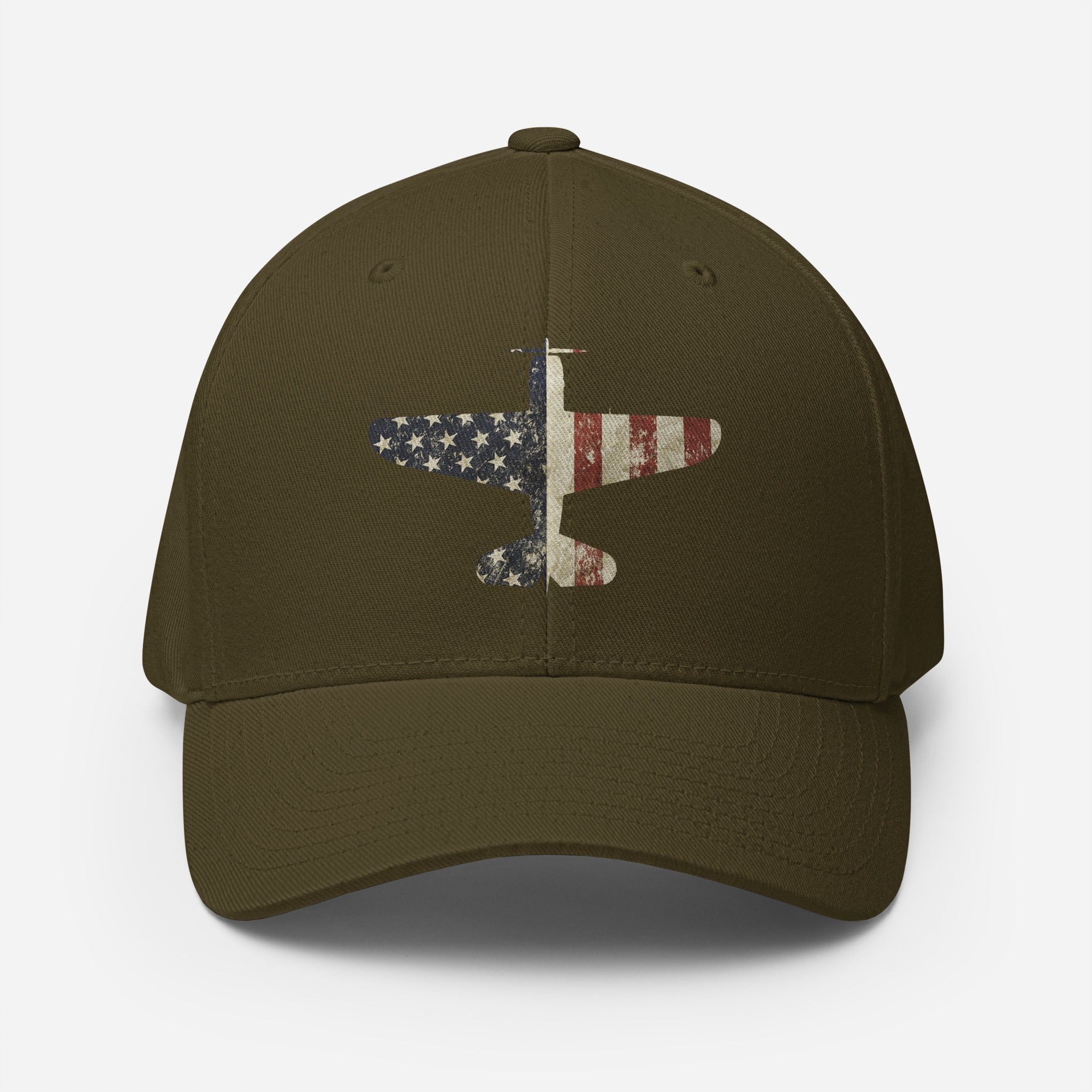
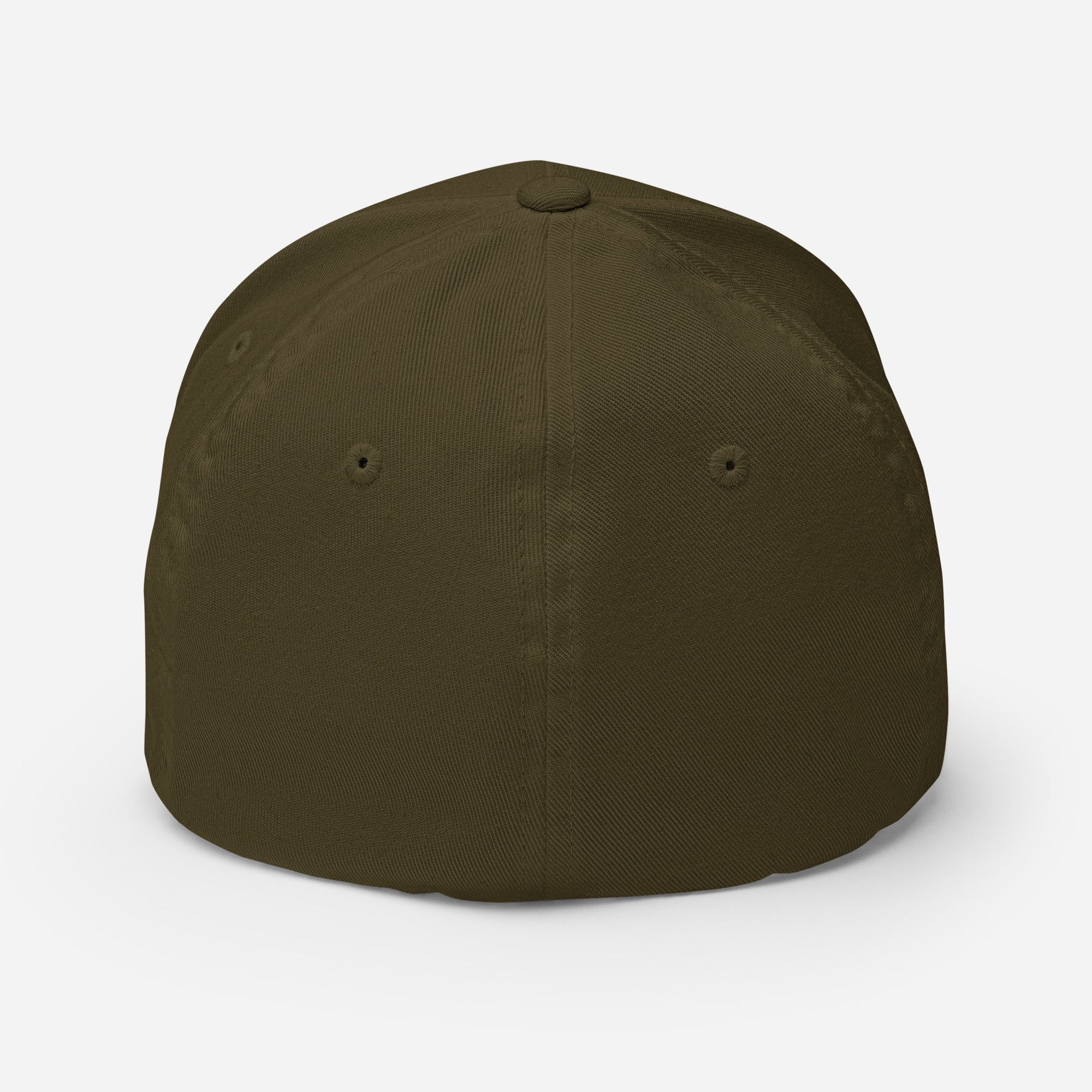
SB2C Stars & Stripes Structured Twill Cap
The SB2C Helldiver, nicknamed the “Beast” by its crews, was the U.S. Navy’s principal carrier-based dive bomber during the latter half of World War II. Intended as the successor to the venerable SBD Dauntless, the Helldiver was faster, carried a heavier bomb load, and incorporated folding wings for carrier operations. However, it was plagued with developmental delays and early design flaws that tarnished its reputation in the eyes of pilots and maintainers alike.
Despite its rocky start, the SB2C matured into a capable and lethal attack aircraft. Powered by a 1,900-horsepower Wright R-2600 engine, it could reach speeds of around 295 mph and carry up to 2,000 pounds of bombs, plus eight 5-inch rockets on underwing hardpoints. Its defensive armament included twin .30 cal or .50 cal machine guns in the rear cockpit, and fixed forward-firing .50 cals in the wings.
The Helldiver made its combat debut in late 1943 and participated in nearly every major U.S. Navy operation in the Pacific from then until the end of the war. It proved instrumental in battles such as the Marianas campaign, Philippines, Iwo Jima, and Okinawa, striking enemy ships, ground targets, and infrastructure with precision. The SB2C was responsible for sinking more Japanese shipping than any other U.S. or Allied aircraft type during WWII—a notable and often overlooked record.
A total of 7,140 Helldivers were built, serving primarily with the U.S. Navy and U.S. Marine Corps, with limited use by Allied nations including Australia, France, and Greece postwar. Despite initial complaints, by the end of the war, many squadrons appreciated the Helldiver’s payload, dive-bombing accuracy, and range. It remained in service into the early postwar years before being phased out in favour of faster jet-powered attack aircraft.
Why are the stripes vertical?
Great question - and you're absolutely right that the U.S. flag is usually displayed with horizontal stripes. But in this design, we’ve reimagined the flag as an artistic tribute rather than a literal representation. We chose to depict the flag as if it were hanging vertically from above, similar to how it might appear draped at a hangar entrance or suspended during a ceremony. This vertical orientation allows the iconic silhouette of the aircraft to really shine -with the red and white stripes running the length of the fuselage, it creates a bold, centred look while still honouring the flag’s spirit and symbolism.
Embark on a historical journey with our captivating warbird-themed caps! Each cap is made to order and features high-quality designs applied using DTG (Direct to Garment) printing — a method that delivers crisp detail and lasting colour directly onto the fabric. Inspired by legendary military aircraft and aviators, these caps are perfect for warbird enthusiasts, air show fans, or anyone who appreciates aviation history. Add a touch of style and historical significance to your everyday wardrobe.
✈ Made to order.
✈ 6 embroidered eyelets providing an ideal level of ventilation.
✈ Stretch band the perfect fit and absolute comfort.
✈ Stylish silver under-visor.
✈ Made from 63% polyester, 34% cotton, 3% spandex twill.
Production & Shipping times can be found here.
This product is made to order, with production beginning once your order has been received. We are, therefore, not able to cancel or amend an order once it has been placed. This includes changes to the shipping address, size, design, or any other specifications. Please review your order details carefully before finalising your purchase.
Please note there can be subtle variations in colour and minor movement of the product during production that may cause a design element not to be the exact same colour or in the exact position as it appears onscreen. More details can be found on our FAQ page. By producing items on demand rather than in large quantities, we actively contribute to minimising overproduction and waste. We genuinely appreciate your mindful purchasing choices, which support this more sustainable approach. Thank you for your understanding and support!
This product is shipped from either Australia, Canada, the United Kingdom, the United States, Latvia or Spain.
Original blank products sourced from Vietnam or Bangladesh.
EU GPSR-related product information:
Age restrictions: For adults
EU Warranty: 2 years
Other compliance information: Meets the lead and phthalates level requirements.
In compliance with the General Product Safety Regulation (GPSR), Oak inc. and SINDEN VENTURES LIMITED ensure that all consumer products offered are safe and meet EU standards. For any product safety related inquiries or concerns, please contact our EU representative at gpsr@sindenventures.com. You can also write to us at Markou Evgenikou 11, Mesa Geitonia, 4002, Limassol, Cyprus.
Damaged or Misprinted Products:
Products that are damaged or shipped with a misprint will be replaced at no additional cost. However, we are not responsible for items damaged in shipping. Please contact Customer Support team and provide photographic evidence of the damaged item with any replacement requests. Please ensure you also quote your 5-digit order number in the email subject line with any replacement requests.
Requests to replace must be received within 30 days of the original item being delivered.
Wrong Product Shipped:
If the wrong product has been shipped to you, please email our Customer Support team to request a replacement for your order. Please provide your 5-digit order number and photos of the entire product, clearly showing how the product differs from what was ordered.
Requests must be received within 30 days of the original item being delivered.
60-Day Delivery Time Guarantee:
If an order does not show as “delivered” by the carrier’s tracking, and it has been more than 60 days since the order was placed, you may request a refund or have a replacement sent. At the sole discretion of I Love A Hangar, the “60-Day Delivery Time Guarantee” may be nullified or extended due to random events such as adverse weather conditions, natural disasters, pandemics, political unrest, or postal worker labour disputes that may impact various delivery locations. The “60-Day Delivery Time Guarantee” is also nullified in the following instances:
✈ Incorrect or incomplete address information provided by customers.
✈ Deliveries that are uncollected by customers from designated collection points.
✈ Missed or failed delivery attempts due to the recipient not being available.
✈ Missed or failed delivery attempts due to the business being closed or unavailable during the carrier's operating hours where the shipping address provided is a business.
✈ Orders that show as delivered by the carrier to the address provided by the customer.
✈ Orders marked as “returned to sender” by the carrier.
Notification for EU Customers:
For products being shipped into the European Union, Article 16(c) and (e) of the Directive 2011/83/EU of the European Parliament and of the Council of 25 October 2011 on consumer rights, the right to cancel or return an order within 14 days is not provided for:
- the supply of goods that are made to the consumer's specifications or are clearly personalised;
- sealed goods which were unsealed after delivery and thus aren't suitable for return due to health protection or hygiene reasons,
As all our products are made to order according to the customer's selected specifications such as colour, size or other custom markings, I Love a Hangar reserves the right to refuse returns at its sole discretion.
Sale items (if applicable):
Only regular priced items may be refunded. Unfortunately, sale items cannot be refunded.
Refunds (if applicable):
As all of our products are made to order, any request for a refund will be dealt with on a case-by-case basis. I Love a Hangar reserves the right to refuse a request for a refund at its sole discretion.
If a Refund has been approved, we will send you an email to notify you that we have approved your refund and you will be automatically refunded on your original payment method within 10 business days. Please remember it can take some time for your bank or credit card company to process and post the refund too.
If more than 15 business days have passed since we’ve approved your refund, please contact our Customer Support team.
Returns:
Please note, as all our products are made to order according to the customer's selected specifications such as colour, size or other custom markings, we do not accept returns, process refunds or provide exchanges or replacements for wrongly ordered products, designs, colours, styles, sizes (outside of our "Shoe Size Guarantee"), buyer remorse or a change of mind. Customers are reminded to review their orders carefully prior to placing an order.
Exchanges:
As we manufacture all our products on demand, we only produce what has been ordered according to the customer's selected specifications, such as colour, size or other custom markings. We, therefore, do not accept returns or process exchanges for wrongly ordered products, designs, colours, styles, sizes (outside of our "Shoe Size Guarantee"), buyer remorse or a change of mind. We make everything on demand, so requesting an exchange for a different product means producing an entirely new product.

Flex fit , embroidered lettering and good shipping time. That's all you need from a hat and I Love Hangar delivered!
Great quality, very comfortable. Looks amazing
A really well made hat that fits nicely!
